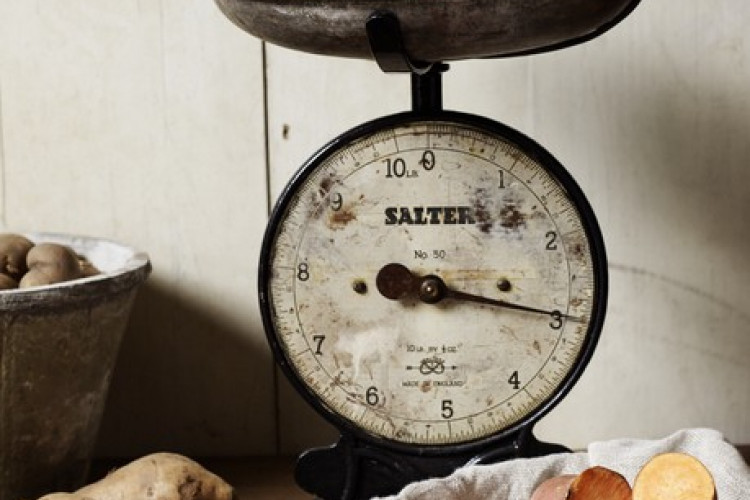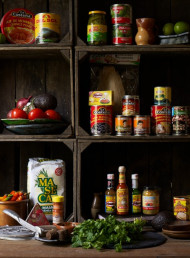A guide to: potatoes

There's more to these pantry favourites than meets the eye...
There is nothing humble about the potato. It has an exalted pedigree, variously hailed as an aphrodisiac, feared as poisonous, and championed by royalty. Having overcome its earlier challenges the potato has become such a staple that it is now the world’s fourth largest food crop and accounts for some 18 per cent of all vegetable sales in New Zealand.
But there is no universal potato. In fact, the word belies the myriad varieties available, with characteristics so diverse that a cook should not treat them as a homogeneous vegetable. Their differences in texture and flavour make each variety suitable to its own particular method of cooking.
Although there are between 50 and 70 varieties of potato in New Zealand, each with their own profile, getting it right is remarkably simple, in principle. The key to understanding potatoes is not so much in the varieties as in the distinction between waxy and floury types.
Waxy potatoes have a high water content and are low in starch, which means that when cooked they have a dense, smooth texture and retain their shape. At the other end of the spectrum floury potatoes are low in water and high in starch, so when cooked they have a dry, delicate, fluffy texture, and break up easily, readily absorbing liquid and flavours. In between waxy and floury on the potato continuum are the all-rounders: general purpose potatoes with moderate starch and water contents, neither very floury nor very waxy.
Most ‘new’ or ‘early’ potatoes are waxy, but as the growing season progresses potatoes change. Some initially waxy varieties become more floury in the ‘main crop’ as their natural sugars convert to starch. Thus potatoes harvested mid-season may be waxy or floury. Similarly the growing conditions of the potatoes affect their ultimate texture and flavour. A Pukekohe-grown potato might be only slightly waxy whereas a Southland-grown potato of the same variety might be very waxy.




“Their differences in texture and flavour make each variety suitable to its own particular method of cooking.”
The uncertainty of not knowing precisely where a potato sits on the waxy/ floury continuum has been reduced in recent times by labelling guidance. Each new line undergoes a cook test before potato growers label their produce as being “smooth on the inside” “fluffy on the inside” or “between smooth and fluffy”, in addition to the potatoes’ variety. Because of the possible varietal differences consumers are advised to pay more heed to the texture and buy according to the cook test rather than the name of the potato.
If you’re unsure what sort of potato you’re dealing with you can easily conduct your own test. Immerse the potato in a brine of one part salt to eleven parts water: waxy potatoes will float, while floury potatoes will sink. Or simply cut the potato open. Floury potatoes leave a white starch residue on the blade of the knife and tend to cling to the blade, whereas waxy potatoes leave little residue and fall free.
For best results with your cooking it’s important to match the type of potato to the method.
POTATO VARIETIES:
Floury: “Fluffy on the Inside”. Best suited to mashing, baking, roasting, frying.
Fianna, Ilam Hardy, Red Rascal, Agria, and Laura (marketed as Red Jacket), are the most common floury varieties. Limited or localised supplies include Victoria, Marabel and Markies (a relative of Agria).
Waxy: “Smooth on the Inside”. Best suited to boiling, braising, stewing as they retain their shape.
Draga, Frisia, Nadine, are the most common waxy varieties. Limited or localised varieties include Jersey Bennes, Liseta, Red King Edward, Tiffany and Annabelle (marketed as Perlas), Highlander, Osprey, Gourmandine and Marilyn.
General Purpose: “Between Smooth and Fluffy”. Can be used for most cooking methods but results may not be as effective as flourier or waxier varieties.
Rua, Desiree, and Moonlight are the most common general purpose varieties. Limited or localised varieties include Rocket, Red Ruby, Van Rosa, Karaka, Driver, Vivaldi (marketed as Vivaldi Gold), Purple Passion, Maris Anchor, and Summer Delight.
KUMARA
Kumara is also known as ‘sweet potato’, although it is not related to the ‘regular’ potato. And the same textural considerations apply. The kumaras’ characteristic sweetness increases with the brightness of their flesh, with Orange kumara being the sweetest of the three.
While many different varieties exist, only three are commercially available.
Owairaka Red is New Zealand’s traditional red kumara and accounts for 70 per cent of the crop. With purple/red skin and cream-coloured flesh, it has a relatively firm texture and holds its shape well, making it an all-purpose kumara.
TokaToka Gold has a smooth, golden skin and a mottled apricot-gold hued flesh. Its soft, mealy texture suits roasting, mashing and frying.
Beauregard Orange has a smooth, orange skin and orange flesh. Its relatively high moisture content makes it most suitable for boiling, braising and stewing.
MAORI POTATOES
The so-called Maori potatoes or “taewa” are actually relicts of cultivars introduced by European explorers in the late eighteenth and early nineteenth centuries. Although members of the same Solanum tuberosum family as ‘regular’ modern potatoes,” Maori potatoes look distinctly different. They generally have deep-set eyes, and are often knobbly and irregular but otherwise differ widely. Their shapes range from spherical through flattish-oval to elongated and their skin colours vary from purple to orange-pink to mottled red and yellow. Their flesh is equally diverse, ranging from white to yellow to purple, sometimes with a coloured ring in cross section, and covering the spectrum from ultra-floury to waxy.
Of the many varieties of Maori potatoes, some of the more common are:
Urenika – elongated tubers with dark purple skin and very floury white–flecked purple flesh
Moemoe – roundish tubers with yellow and reddish-mottled skin and waxy purple-flecked yellow flesh
Peruperu – elongated tubers with creamy-yellow skin splashed with purple and floury creamy-white flesh streaked with yellow
SELECTION AND STORAGE
For potatoes, Maori potatoes and kumara alike the same selection and storage criteria apply. All should be firm, dry and blemish-free. Avoid spongy specimens, or those with wrinkly, broken skins or green tinges or sprouts. Unwashed potatoes are preferable as the soil coating protects them from the light. Store them away from the light in a cool, well-ventilated place, but not in the refrigerator. Do not store in plastic, (unless it is a Greenguard bag designed especially for potatoes) as it causes them to sweat and quickly deteriorate; a paper bag or box is an ideal container.
latest issue:
Issue #116
Issue 116 of dish is a special 20th birthday collector’s edition! This gorgeous issue brings the party to you, featuring delectable birthday cakes with recipes supplied by guest chefs – from Al Brown’s simply delicious Chocolate Fondant Cake to Ben Bayly’s Opera Celebration Cake. From cakes to sensational drinks and nibbles, to a French bistro feast and Sarah and Claire’s top 20 winter recipes, the magazine is jam-packed with dishes to make at home. 20 years strong and ready to party – issue 116 is on sale NOW!





